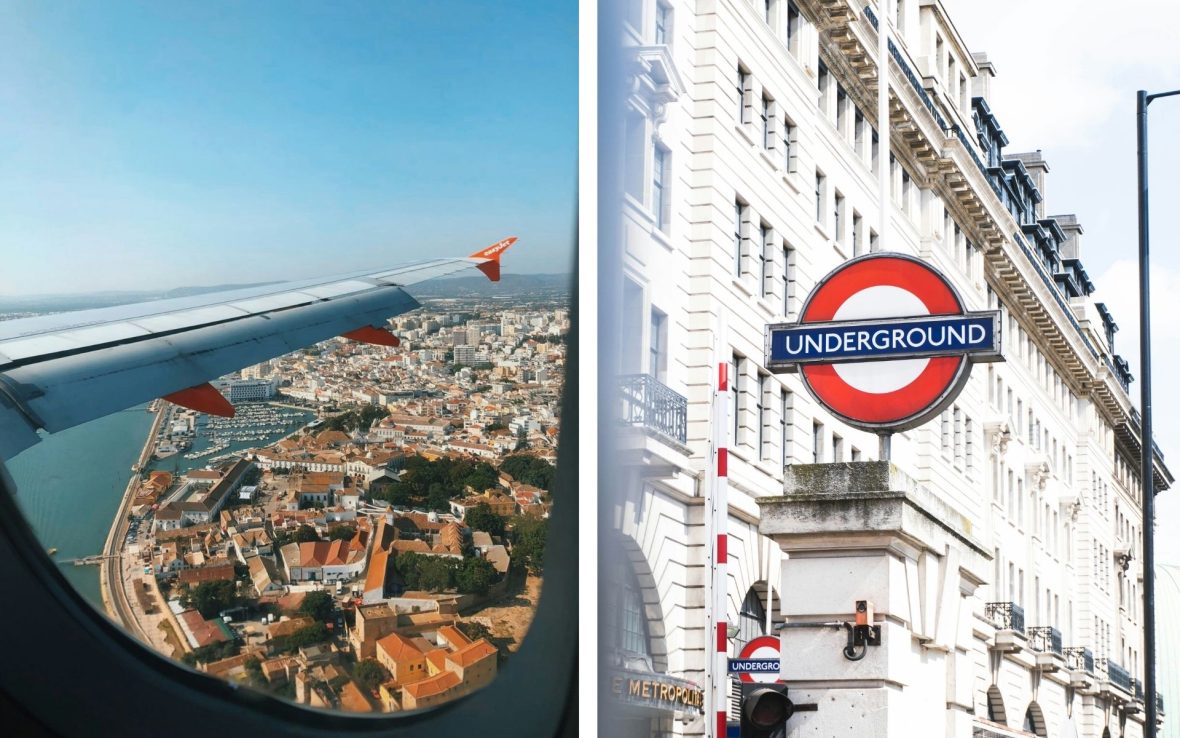
If you’ve always wanted to go to Europe but assumed it’s too expensive, think again. Vacations in Europe can cost a fraction of the price of domestic travel in the States.


If you’ve always wanted to go to Europe but assumed it’s too expensive, think again. Vacations in Europe can cost a fraction of the price of domestic travel in the States.
I can get a dozen eggs for about USD$3.50.
If that sounds too good to be true, you’re right. There is a big catch: These bargain-basement eggs can only be bought in the East London neighborhood where I’ve been living for the last three years.
Constant inquiries about the price of eggs were not on my 2025 bingo card as an American who lives abroad. But it’s come up so frequently that I’ve realized there’s a huge disconnect between how much it costs to live and travel in Europe and how much Americans think it costs.

For starters, our back-of-the-envelope exchange rate is outdated, based on a time when the euro and pound were far stronger than the dollar, which is not the case today. Second, our perception of cost is rooted in our own experience. It’s notoriously expensive to spend a week in a boutique New York hotel, so we may make the same assumptions about boutique hotels in London, or Berlin, or Rome. The reality, however, is that salaries in many (though not all) European cities are more in line with the cost of living, and those salaries are also lower on average than they are in the US—which, in turn, keeps prices lower.
If you’ve assumed you won’t be able to afford a trip to Europe, now might be the time to revisit those dreams. There are so many ‘mistake fare’ newsletters and bargain flight search engines today that it’s fairly easy to find roundtrip fares to Europe for under USD$500 roundtrip, if you’re willing to be flexible on dates and not married to a specific airline.
And once you get there, hotels, dining, attractions, and transportation are often significantly less expensive than what you would pay for similar excursions around the United States.
Let’s take a closer look.
Taking trains around Europe can be expensive if you don’t plan ahead, particularly if you’re traveling within the UK or between the UK and Europe, but getting a rail pass like the unlimited global option from Eurail can increase flexibility while keeping your costs predictable.
When I first moved to London from Colorado, a lot of American friends had the same response: Isn’t that so expensive? And, yes, for sure, it can be—like any big city, you can find expensive dinners, fancy apartments, and pricey activities. But after several years of traveling around Europe with East London as my home base, I have sticker shock whenever I go home.
Why? Because the current exchange rate works in our—Americans—favor.Today the dollar is much stronger against both the euro and pound currencies—the pound is worth about USD$1.30, and the euro is worth about USD$1.08.

Public transportation is excellent across Europe, and it’s easy to take trains between virtually any two major cities. Access to transit varies once you get beyond urban centers, but in some places like Switzerland and Scandinavia, trains and buses will take you deep into the mountains. In some cities, like Ticino, Switzerland, and Kufstein, Austria, you can get a guest card through your hotel that offers you unlimited free public transportation, plus free or discounted entry to many tourist attractions, for the duration of your stay.
So, while you may often need to rent a car to travel domestically in the US, it’s rare that you would need one when traveling around Europe. That right there is a significant source of savings, as rental cars cost an average of USD$520 to $625 per week in many US cities, according to NerdWallet—and that’s if you book three months in advance.
Taking trains around Europe can be expensive if you don’t plan ahead, particularly if you’re traveling within the UK or between the UK and Europe, but getting a rail pass like the unlimited global option from Eurail can increase flexibility while keeping your costs predictable.
Often, flying between cities in Europe is laughably cheap compared to domestic flights in the US. In the third quarter of 2024, the Bureau of Labor Statistics published a table of average domestic flight costs from over 400 US cities, and found that the national average was about $366.
In Europe, it’s easy to get double-digit roundtrip flights with just a bit of planning. I just did a quick search on Skyscanner and found 16 countries with direct flights from London for under $20 each way. Say what you will about Ryanair’s service (and I do have an awful lot to say, none of it good), but it’s pretty hard to beat flights so cheap, it literally costs more to take public transportation to the airport than it does to leave the country.

If you’re looking to book experiences, tours, or self-guided treks in Europe, I recommend searching specifically for local operators. There can be a bit of a trick to this, sometimes, as search engines like Google often default to showing you nearby options.
To browse options headquartered in the city or country you want to visit, try poking around the local tourism board’s website (search for “visit England,” for example, or “tourism board Czech Republic”). You could also search for members of relevant trade organizations, such as the Adventure Travel Trade Association, which allows you to filter a list of its tour operator members by the country they’re headquartered in.
A few UK-based companies I can recommend include Inntravel, Wilderness Scotland, and Macs Adventure, all of whom I’ve traveled with around the UK. In 2021, I spontaneously booked a 10-day trip with Macs to hike the 100-mile Cotswold Way, and while it wasn’t a cheap experience, it cost far less than I expected it to. The pound was stronger against the dollar then, and still I spent about $2,000 for 10 nights of hotels, daily luggage transfer, and all my logistics taken care of. That also included a single supplement fee.
Breckenridge, Colorado, charges up to $284 for a single-day lift ticket. In January, I took a trip to Europe’s largest ski area, which cost less than $850 for six days of skiing and seven nights of lodging.
Outdoor adventures such as skiing are also far cheaper in Europe. Just take Breckenridge, Colorado, for example, which is charging up to USD $284 for a single-day lift ticket through the end of March. In January, I took a trip to Europe’s largest ski area, Val Thorens, France, operated by a British ski trip company called NUCO. It cost less than USD $850 for six days of skiing and seven nights of lodging. (It’s worth noting, however, that I was paired with another traveler on that trip, and my room was not fancy).

In general, hostels are far more ubiquitous across Europe than they are in the United States, where they’re still something of a novelty and often more upscale. If you’re a solo traveler trying to travel as cheaply as possible and not bothered by shared rooms, this can bring your accommodation costs down to $10 per night.
In comparison, I’ve stayed in hostels around Colorado, California, Indiana and New Mexico, and have found many to be more like boutique hotels than the utilitarian dozen-bunk hostels in Europe. During high season in Colorado ski towns, you may pay $50 to $100 or more for a bunk in a shared room, before taxes and fees.
But you don’t have to rough it to save on accommodations in Europe. Last September, The New York Times reported that the average cost of a hotel in New York City was $417. The London market averages £158 ($204), according to Statista.
And then there’s tipping culture. In much of Europe, small tips of 5 to 10 percent are appreciated but not expected, compared with a standard 20 percent minimum in US restaurants.
Priceoftravel.com recently analyzed over 50 European cities to create “The 3-Star Traveler Index.” The index is based on two people sharing hotel rooms and taxis, and includes the price of an inexpensive but well-reviewed 3-star hotel in a central location and two taxi rides, three meals, one museum or other popular attraction, and three alcoholic beverages per day.
On the lower end of the index, Sofia, Bulgaria; Bucharest, Romania; Belgrade, Serbia; and Budapest, Hungary, range from about $60 to $69 per person, per day. In the middle- to high-end, you’ll find Madrid, Munich, Vienna, Hamburg, Milan, Oslo, and Helsinki, ranging from about $135 to $150 per day. Switzerland tops the list with Interlaken and Zürich around $265 to $280 per person, per day.

I moved from Colorado to London in 2021, and since then I’ve traveled to at least 15 European countries, many of them more than once. More often than not—with Switzerland being a key exception—I’ve had a sort of reverse sticker shock. I’m often amazed at how affordable Europe is, especially when I compare it to the cost of visiting my family in New England or traveling for work around the country.
We have little time off in the US, so the travel time and downsides of jet lag can feel excessive for just a week or two of vacation. But if you’ve been holding for price rather than time constraints, it might be worth another look.
***
Adventure.com strives to be a low-emissions travel publication. We are powered by, but editorially independent of, Intrepid Travel, the world’s largest travel B Corp, who help ensure Adventure.com maintains high standards of sustainability in our work and activities. You can visit our sustainability page or read our Contributor Impact Guidelines for more information.

Kassondra Cloos is a travel journalist from Rhode Island living in London, and Adventure.com's news and gear writer. Her work focuses on slow travel, urban outdoor spaces and human-powered adventure. She has written about kayaking across Scotland, dog sledding in Sweden and road tripping around Mexico. Her latest work appears in The Guardian, Backpacker and Outside, and she is currently section-hiking the 2,795-mile England Coast Path.








Can't find what you're looking for? Try using these tags: